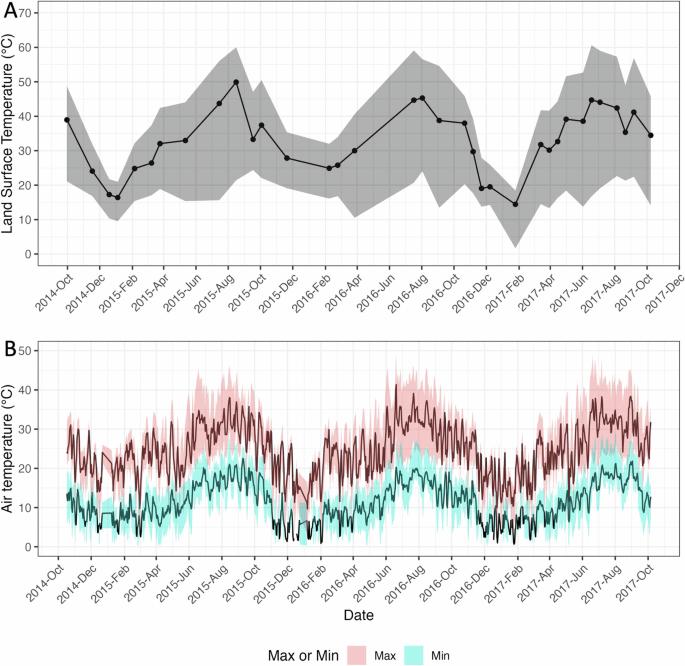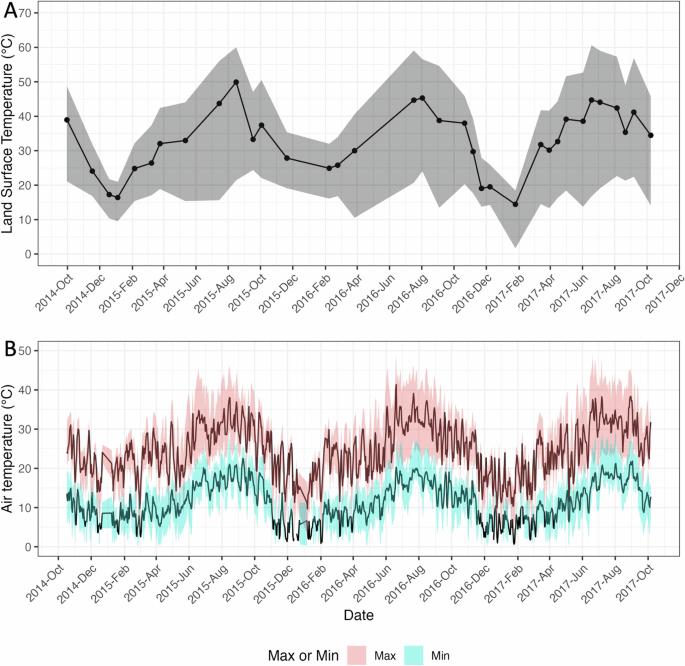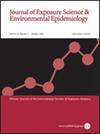加利福尼亚州圣迭戈以居住地为基础的热暴露测量方法与以流动性为基础的热暴露测量方法的比较
IF 4.7
3区 医学
Q2 ENVIRONMENTAL SCIENCES
Journal of Exposure Science and Environmental Epidemiology
Pub Date : 2024-09-11
DOI:10.1038/s41370-024-00715-5
引用次数: 0
摘要
背景在一个城市区域内,热量会因空间而异。因此,个人层面的热暴露可能取决于个人的日常出行模式(也称为流动模式或活动空间),但热暴露通常根据居住地进行测量。方法来自加利福尼亚州圣地亚哥县的参与者(n = 599;年龄在 35-80 岁之间 [平均 = 59 岁])佩戴 GPS 设备,测量他们在 2014-10-17 至 2017-10-06 期间 14 天内的日常出行情况。我们测量了两个热指标(地表温度 [LST] 和空气温度)的暴露量,一种方法考虑了他们的移动模式,另一种方法仅考虑了他们的居住地。我们比较了每种方法得出的每个指标的参与者平均暴露值和最大暴露值。结果基于流动性的总体平均地表温度暴露值(34.7 °C)几乎等同于基于居住地的相应平均值(34.8 °C;平均值差异 = -0.09 °C)。同样,总体流动平均暴露气温(19.2 °C)与相应的居住地平均暴露气温(19.2 °C)之间的平均差(-0.02 °C)可以忽略不计。然而,在比较最高气温,特别是低温层时,出现了有意义的差异。以流动性为基础的平均最高 LST 为 40.3 °C,而以居住地为基础的平均最高 LST 为 35.8 °C,相差 4.51 °C。气温的最大值差异要小得多(平均值 = 0.40 °C;标准差 = 1.41 °C),但仍大于平均值的相应差异。 随着气候变暖,评估居家和外出的热暴露对了解其健康影响非常重要。我们比较了两种方法来估算两种热量指标(地表温度和空气温度)的暴露量。第一种方法只考虑在家时的暴露量,第二种方法则考虑日常旅行时的暴露量。考虑到每种方法估算的平均暴露量,结果几乎相同。考虑到最大暴露量(具体定义见文中),两种方法之间的差异更大,尤其是在地表温度方面。本文章由计算机程序翻译,如有差异,请以英文原文为准。


Is home where the heat is? comparing residence-based with mobility-based measures of heat exposure in San Diego, California
Heat can vary spatially within an urban area. Individual-level heat exposure may thus depend on an individual’s day-to-day travel patterns (also called mobility patterns or activity space), yet heat exposure is commonly measured based on place of residence. In this study, we compared measures assessing exposure to two heat indicators using place of residence with those defined considering participants’ day-to-day mobility patterns. Participants (n = 599; aged 35-80 years old [mean =59 years]) from San Diego County, California wore a GPS device to measure their day-to-day travel over 14-day intervals between 2014-10-17 and 2017-10-06. We measured exposure to two heat indicators (land-surface temperature [LST] and air temperature) using an approach considering their mobility patterns and an approach considering only their place of residence. We compared participant mean and maximum exposure values from each method for each indicator. The overall mobility-based mean LST exposure (34.7 °C) was almost equivalent to the corresponding residence-based mean (34.8 °C; mean difference in means = −0.09 °C). Similarly, the mean difference between the overall mobility-based mean air temperature exposure (19.2 °C) and the corresponding residence-based mean (19.2 °C) was negligible (−0.02 °C). Meaningful differences emerged, however, when comparing maximums, particularly for LST. The mean mobility-based maximum LST was 40.3 °C compared with a mean residence-based maximum of 35.8 °C, a difference of 4.51 °C. The difference in maximums was considerably smaller for air temperature (mean = 0.40 °C; SD = 1.41 °C) but nevertheless greater than the corresponding difference in means. As the climate warms, assessment of heat exposure both at and away from home is important for understanding its health impacts. We compared two approaches to estimate exposure to two heat measures (land surface temperature and air temperature). The first approach only considered exposure at home, and the second considered day-to-day travel. Considering the average exposure estimated by each approach, the results were almost identical. Considering the maximum exposure experienced (specific definition in text), the differences between the two approaches were more considerable, especially for land surface temperature.
求助全文
通过发布文献求助,成功后即可免费获取论文全文。
去求助
来源期刊
CiteScore
8.90
自引率
6.70%
发文量
93
审稿时长
3 months
期刊介绍:
Journal of Exposure Science and Environmental Epidemiology (JESEE) aims to be the premier and authoritative source of information on advances in exposure science for professionals in a wide range of environmental and public health disciplines.
JESEE publishes original peer-reviewed research presenting significant advances in exposure science and exposure analysis, including development and application of the latest technologies for measuring exposures, and innovative computational approaches for translating novel data streams to characterize and predict exposures. The types of papers published in the research section of JESEE are original research articles, translation studies, and correspondence. Reported results should further understanding of the relationship between environmental exposure and human health, describe evaluated novel exposure science tools, or demonstrate potential of exposure science to enable decisions and actions that promote and protect human health.

 求助内容:
求助内容: 应助结果提醒方式:
应助结果提醒方式:


